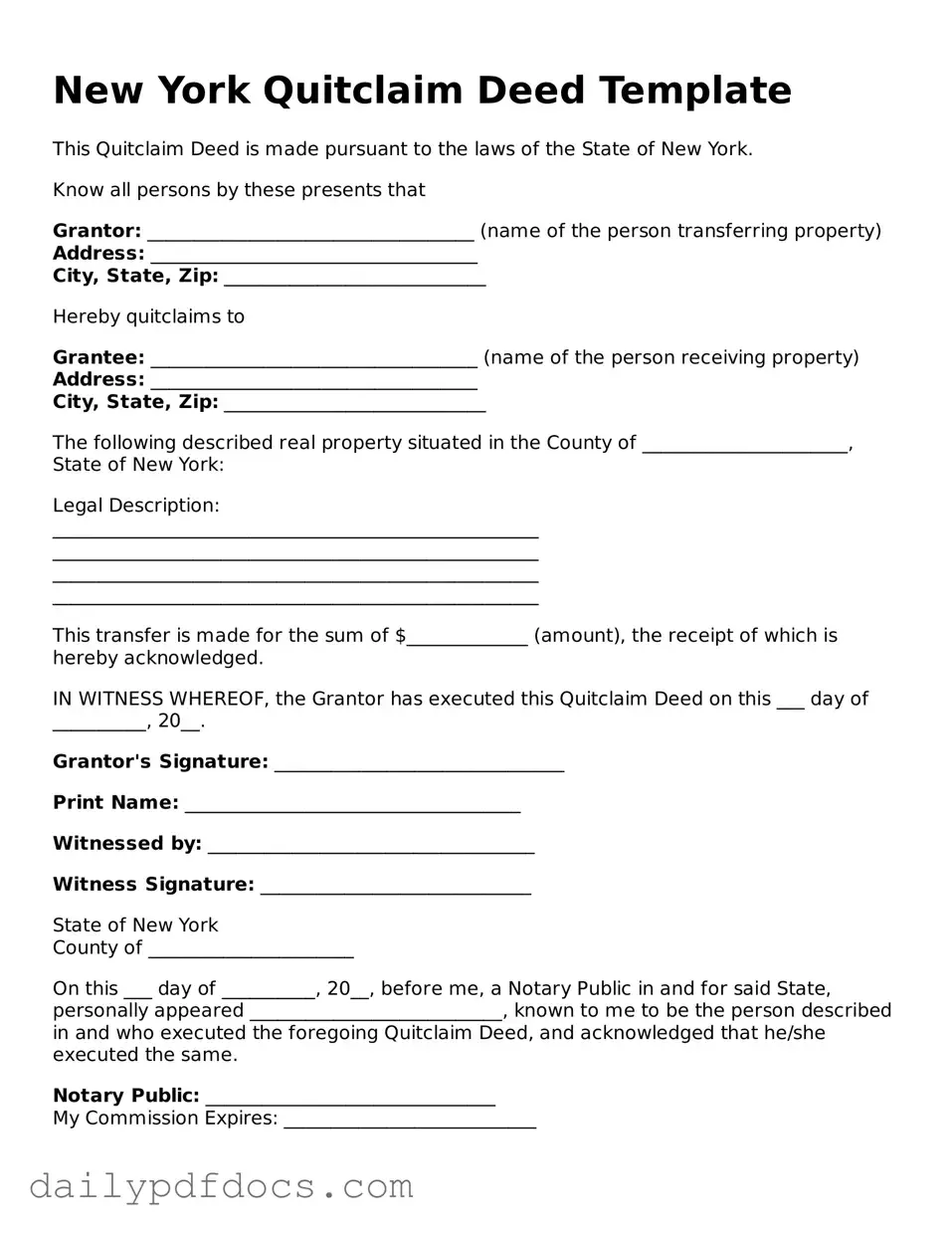New York Quitclaim Deed Template
This Quitclaim Deed is made pursuant to the laws of the State of New York.
Know all persons by these presents that
Grantor: ___________________________________ (name of the person transferring property)
Address: ___________________________________
City, State, Zip: ____________________________
Hereby quitclaims to
Grantee: ___________________________________ (name of the person receiving property)
Address: ___________________________________
City, State, Zip: ____________________________
The following described real property situated in the County of ______________________, State of New York:
Legal Description:
____________________________________________________
____________________________________________________
____________________________________________________
____________________________________________________
This transfer is made for the sum of $_____________ (amount), the receipt of which is hereby acknowledged.
IN WITNESS WHEREOF, the Grantor has executed this Quitclaim Deed on this ___ day of __________, 20__.
Grantor's Signature: _______________________________
Print Name: ____________________________________
Witnessed by: ___________________________________
Witness Signature: _____________________________
State of New York
County of ______________________
On this ___ day of __________, 20__, before me, a Notary Public in and for said State, personally appeared ___________________________, known to me to be the person described in and who executed the foregoing Quitclaim Deed, and acknowledged that he/she executed the same.
Notary Public: _______________________________
My Commission Expires: ___________________________
Prepared by:
____________________________________
____________________________________
____________________________________
